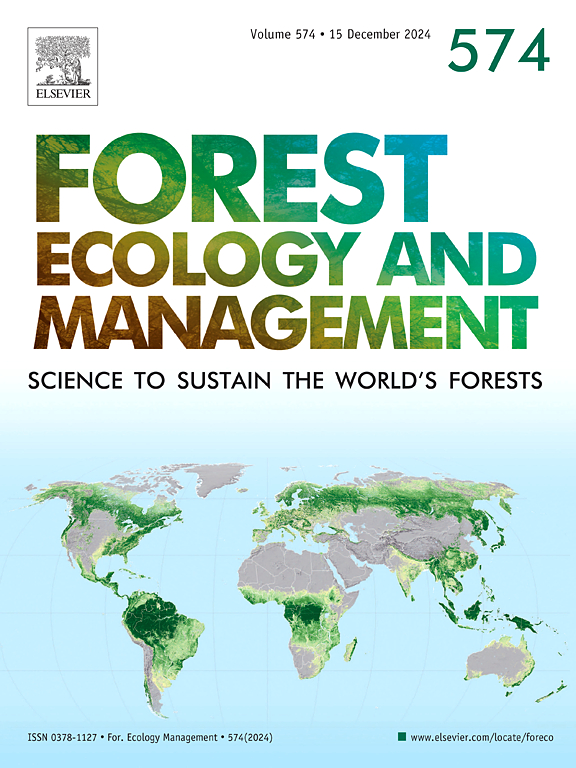Mechanical site preparation and use of non-invasive cover crops influences early-successional forest vegetation composition of a reclaimed airstrip in the Boreal Forest
IF 3.7
2区 农林科学
Q1 FORESTRY
引用次数: 0
Abstract
Rebuilding native forest ecosystems after industrial disturbance is key to sustainable resource development. However, self-sustaining forests do not always result from current reclamation practices, mostly due to grass-driven arrested succession. Here we assessed the interactive effects of soil treatment and cover cropping on forest succession in a recently reclaimed airstrip in western Canada. Three surface soil treatment techniques were applied in five block replicates following asphalt removal, soil decompaction, site recontouring and topsoil placement with dozers: no surface treatment (smooth), discing with agricultural disc harrows (disc), or plowing with a RipPlow™ (plow). Within each soil treatment, subplots were then either seeded with Secale cereale (fall rye), a non-invasive annual grass, or left without a cover crop. In the first 5 years after treatment, soil treatment had a much greater impact on the vegetation than cover cropping. Plowing favored tree growth while both plowing and discing treatments supported natural regeneration of seed-banking shrub species and native forb cover when compared to the smooth treatment. The smooth treatment favored grass species (mostly non-native), presumably by allowing them to spread horizontally though it also encouraged higher rates of establishment of wind-dispersed Salix species. In general, the discing soil treatment had intermediate effects on tree growth and vegetation community composition. Secale cereale suppressed non-native weeds during the early stages and disappeared towards the end of the experiment, without hindering the establishment of desirable woody species. We conclude that increasing soil surface variability through the plow treatment tested in the present investigation, and potentially aided by the addition of a non-invasive cover crop, represent a combination of reclamation strategies to promote forest development in heavily disturbed industrial sites.
求助全文
约1分钟内获得全文
求助全文
来源期刊

Forest Ecology and Management
农林科学-林学
CiteScore
7.50
自引率
10.80%
发文量
665
审稿时长
39 days
期刊介绍:
Forest Ecology and Management publishes scientific articles linking forest ecology with forest management, focusing on the application of biological, ecological and social knowledge to the management and conservation of plantations and natural forests. The scope of the journal includes all forest ecosystems of the world.
A peer-review process ensures the quality and international interest of the manuscripts accepted for publication. The journal encourages communication between scientists in disparate fields who share a common interest in ecology and forest management, bridging the gap between research workers and forest managers.
We encourage submission of papers that will have the strongest interest and value to the Journal''s international readership. Some key features of papers with strong interest include:
1. Clear connections between the ecology and management of forests;
2. Novel ideas or approaches to important challenges in forest ecology and management;
3. Studies that address a population of interest beyond the scale of single research sites, Three key points in the design of forest experiments, Forest Ecology and Management 255 (2008) 2022-2023);
4. Review Articles on timely, important topics. Authors are welcome to contact one of the editors to discuss the suitability of a potential review manuscript.
The Journal encourages proposals for special issues examining important areas of forest ecology and management. Potential guest editors should contact any of the Editors to begin discussions about topics, potential papers, and other details.
 求助内容:
求助内容: 应助结果提醒方式:
应助结果提醒方式:


